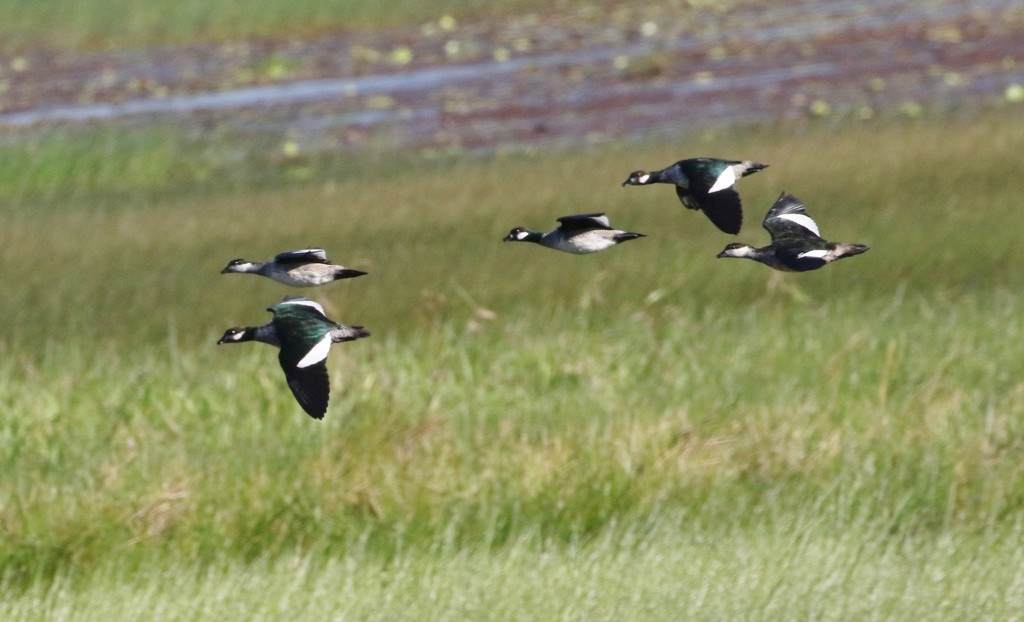Green Pygmy Goose
A species of Pygmy Geese Scientific name : Nettapus pulchellus Genus : Pygmy Geese
Green Pygmy Goose, A species of Pygmy Geese
Botanical name: Nettapus pulchellus
Genus: Pygmy Geese
Content
Description General Info
 Photo By silversea_starsong , used under CC-BY-NC-4.0 /Cropped and compressed from original
Photo By silversea_starsong , used under CC-BY-NC-4.0 /Cropped and compressed from original Description
Ranging from 30 to 36 cm (12 to 14 in) in length, the green pygmy goose is one of the smallest species of duck. It has a 48 to 60 cm (19 to 23.5 in) wingspan. It has a small bill and a compact form. The breeding male has a predominantly dark green back and neck, and a dark gray crown. The cheeks are white, and the underparts are pale grey and white scalloped. The tail, primary flight feathers and primary coverts are black, while the secondary flight feathers are white. The secondary coverts are a dark iridescent green. This iridescence is lost outside of the breeding season and the plumage becomes duller. The species exhibits a degree of sexual dimorphism — the female has a barred rather than green neck but otherwise resembles the non-breeding male. Immature birds are less brightly coloured, and have mottled dark brown heads. The male has a high-pitched whistle and the female a lower-pitched call. 
Size
36 cm
Nest Placement
Floating
Feeding Habits
Green Pygmy Goose primarily feeds on seeds, leaves, flowers, buds, and stems of aquatic plants and occasionally consumes aquatic invertebrates. It employs grazing, head dipping, upending, and diving techniques while swimming. Green Pygmy Goose is mostly vegetarian, with a significant part of its diet comprising Nymphaceae during the wet season. It rarely ventures onto land, favoring midday foraging in open water.
Habitat
Green Pygmy Goose thrive in lowland tropical freshwater environments such as deep lakes, lagoons, and billabongs, which are rich in emergent vegetation like water lilies and have a depth of over one meter. They adapt to brackish or saline waters sometimes and prefer broad river lowlands, avoiding shallow, fast-flowing, or densely vegetated waters. Seasonal fluctuations may force green Pygmy Goose into atypical areas.
Dite type
Omnivorous
General Info
Feeding Habits
Bird food type
Distribution Area
The green pygmy goose is found in southern New Guinea and across northern Australia (from Western Australia, through Northern Territory and into Queensland). To the west, it commonly reaches Timor-Leste, where it possibly breeds at Lake Iralalara. It is largely resident, apart from dispersion in the wet season. The habitat is well-vegetated lowland lagoons and other permanent fresh waters. 
Species Status
Not globally threatened.
Scientific Classification
Phylum
Chordates Class
Birds Order
Waterfowl Family
Geese Genus
Pygmy Geese Species
Green Pygmy Goose